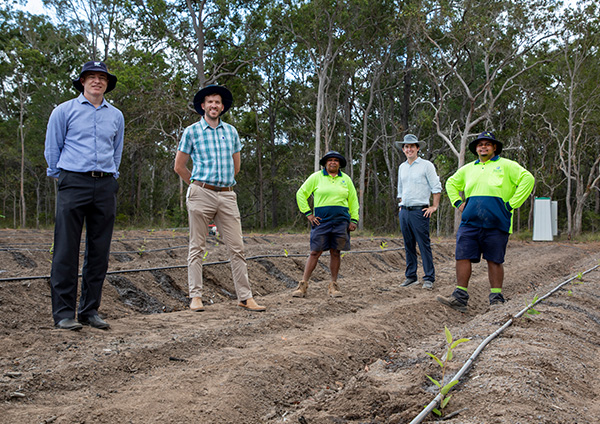Recycled water to help grow another 30,000 trees

The world-leading project that uses waste water to irrigate Fraser Coast hardwood plantations, rather than ending up in the ocean, is about to grow by up to 30,000 trees.
Fraser Coast Mayor George Seymour said Council was a national leader in re-using treated effluent for farming and agroforestry.
“Council is developing a new 28-hectare plantation at Nikenbah with work starting this week to plant 30,000 seedlings,” he said.
“The project will prevent more than 4,000 kilograms of nutrients a year being discharged into the ocean by utilising excess treated effluent from the region.”
Currently 2,441 million litres of recycled water are used each year to irrigate Council timber plantations. A further 3,000 million litres is used by Maryborough and Hervey Bay farmers.
The Christensen Plantation is right beside the already established Hebblewhite Plantation on the outskirts of Hervey Bay. Both are named after the former families which farmed on the properties.
Cr Seymour said the new plantation would increase the use of recycled water by 135 million litres a year to 2,576 million litres.
“That’s good for the environment and good for the Great Barrier Reef,” Cr Seymour said.
“Our recycled water scheme, which has been in place for more than 25 years, routinely uses 90 to 100 per cent of the Fraser Coast’s treated wastewater for tree plantations, golf courses, turf farms, sporting fields and sugar cane crops.
“This new plantation will ensure that the re-use scheme keeps pace with the increase in effluent as the Hervey Bay populations grows.”
New tree species will also be trialled as part of the development of the new plantation.
The $460,000 project is part of the Cleaner Wastewater (Wastewater Stewardship) initiative funded by the Queensland Government’s Reef Water Quality Program ($235,000) and Council ($225,000).
“The project is employing local Aboriginal and Torres Strait Islanders to assist with the tree planting,” Cr Seymour said.
“It is anticipated that the planting and installation of irrigation equipment will be finished by January 2021, weather permitting.”
The project is also gaining attention as part of a state government push to establish Queensland as a leader in carbon farming – a program that aims to strip the greenhouse gas from the atmosphere.
The Queensland Government has committed to reducing carbon emissions by at least 30% on 2005 levels by 2030 and reaching zero net emissions by 2050.
“The 28-hectare plantation could absorb 10,000 tonnes of carbon over 15 years which will help Council offset its carbon footprint and cut greenhouse gases in the atmosphere,” Cr Seymour said.
“Carbon faming could be a new income stream for Council which will help offset our operating costs.”
There are already about 250 carbon farming projects in Queensland.
The state government believes that a Queensland carbon farming industry could create jobs in regional areas and contribute to reducing the state’s carbon emissions while improving the health of waterways and proving habitat for threatened species.
